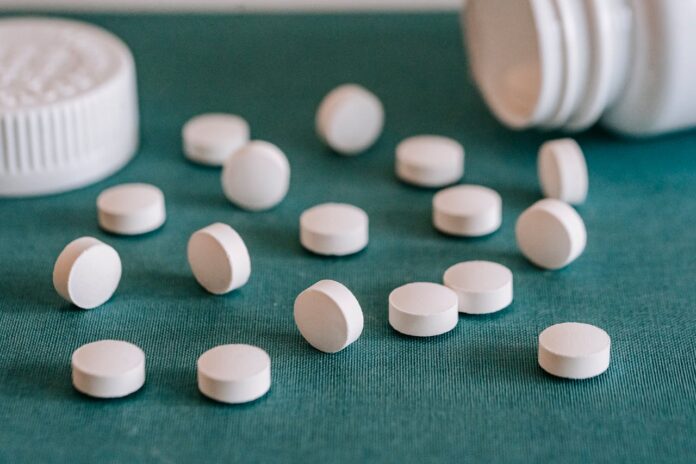In a world where safety precautions are paramount, child-resistant packaging stands as a crucial safeguard in the healthcare landscape and is a vital safety measure in healthcare, preventing accidental medication ingestion by children. Often underestimated, it’s crucial for protecting lives and meeting industry standards, with the World Health Organisation (WHO) citing it as the “best-documented cause of the reduction of child poisoning in the developed world” since 2008. This post will cover the key benefits and types of child-resistant packaging.
Understanding Child-Resistant Packaging
Child-resistant packaging is designed to keep children under 52 months from accessing harmful substances while remaining accessible to adults. Achieving this balance requires precise engineering and innovative design. Such packaging must pass specific safety tests to meet regulatory standards and is essential for pharmaceuticals, household chemicals, and any potentially harmful products.
Beyond legal compliance, child-resistant packaging signifies a commitment to safety and responsibility in the healthcare and pharmaceutical industries. By integrating these measures, companies demonstrate their dedication to consumer safety. For healthcare professionals, understanding the effectiveness of child-resistant packaging enhances patient care and safety.
The Importance of Adhering to Industry Regulations
Compliance with child-resistant packaging regulations is essential in many regions to protect children from accidental harm. While ethical responsibility motivates the adoption of these measures, manufacturers must also meet specific industry standards.
Benefits of Child-Resistant Packaging for the Industry
Child-resistant packaging offers key advantages for the healthcare and pharmaceutical industries. It reduces the risk of accidental ingestion by children, preventing health crises, non-fatal injuries, and illnesses from chemical exposure, while also minimising legal liabilities. The World Health Organisation, UNICEF, and regulatory authorities recognise its life-saving capabilities.
Beyond safety, this packaging enhances brand reputation by demonstrating a commitment to childproofing, boosting customer trust and loyalty. It prevents accidental spillages, preserves product quality, and provides convenience with reclosable designs. For companies, it ensures regulatory compliance and supports innovation, benefiting the entire supply chain.
Types of Child-Resistant Packaging
Child-resistant packaging comes in various forms, each tailored to meet specific needs and preferences. Some of the most common types include:
1. Push-and-Turn Caps
Push-and-turn caps, commonly found on medication bottles, require a specific sequence of actions to open, making them difficult for children to manipulate. While they are highly effective for child safety, these caps remain easy for adults to use. This balance of security and convenience makes push-and-turn caps a popular choice for pharmaceutical products.
2. Blister Packs
Blister packs, used for tablets and capsules, consist of individual compartments that are accessed one at a time, making it harder for children to access the entire contents. This design also protects the medication from environmental factors like moisture and air, maintaining its effectiveness. Additionally, blister packs are beneficial for medications that require strict dosage control.
3. Squeeze-and-Twist Lids
Squeeze-and-twist lids require both squeezing and twisting to open, creating a strong barrier against child access. Commonly used for household products like cleaning agents and personal care items, their dual-action design makes them ideal for products stored within children’s reach. This packaging effectively balances safety and practicality.
4. Child-Resistant Bottles
A critical element in preventing accidental poisonings, child-resistant bottles offer a secure solution for storing medications and potentially hazardous substances. By employing caps that require coordinated pressure and rotation to open, these bottles effectively reduce the risk of children accessing harmful contents, thus contributing to home safety and peace of mind for parents and caregivers.
Innovations in The Future of Child-Resistant Packaging
Technological advancements are driving innovation in child-resistant packaging, leading to more effective and user-friendly designs. One notable development is the integration of digital elements, such as sensors, that alert users to tampering or improper sealing, enhancing security and providing peace of mind.
Additionally, sustainable materials are increasingly being used in child-resistant designs, aligning with consumer preferences for eco-friendly products. This shift towards green packaging reflects the industry’s commitment to innovation and environmental responsibility.
The Role of the Packaging Industry
The packaging industry is crucial for developing and implementing child-resistant solutions. By collaborating with healthcare professionals and pharmaceutical companies, manufacturers can ensure their products meet high safety standards.
Research and development are essential for creating innovative solutions that address emerging challenges, helping companies stay ahead of regulatory changes and consumer expectations. Additionally, ongoing education and training are vital for keeping up with advancements and best practices, ensuring the reliability of child-resistant packaging.
Promoting Best Practices in Child-Resistant Packaging
To maximise the benefits of child-resistant packaging, best practices must be promoted across the industry. This includes adhering to regulatory standards, conducting regular safety evaluations, and incorporating consumer feedback into design improvements.
Manufacturers and healthcare professionals should collaborate to raise public awareness through educational campaigns that highlight proper use. For instance, studies show that 85% of child-resistant packaging failures occur when adults fail to secure the packaging correctly. By adopting a proactive safety approach, the industry can foster a culture of responsibility and innovation, enhancing consumer trust and driving continuous improvement.
Child-resistant packaging for Pharmaceuticals
Child-resistant packaging is vital for healthcare and pharmaceutical industries, protecting against accidental ingestion by children. By following regulations and best practices, companies can enhance safety and improve their brand reputation while establishing innovation in the packaging sector. Healthcare professionals and industry leaders should understand various packaging types to make informed decisions. Staying connected with industry experts and resources can help create a safer future for everyone.







It’s good that someone is doing something about keeping kids safe.
Glad you posted something about this. It is important to keep our kids safe.
In some countries they have no such things.
I knew a kid once who thoght it was fun to put a plastic bag over his head.
Child resistant packaging is where you take it away and put it high up in a cupboard.
This is a very informative info. Food and medicine companies need to be more responsibe.
Thanks for this really informative article. I have seen some packaging that is really dangerous not only for kids. Lets hope something happens and there is a solution.